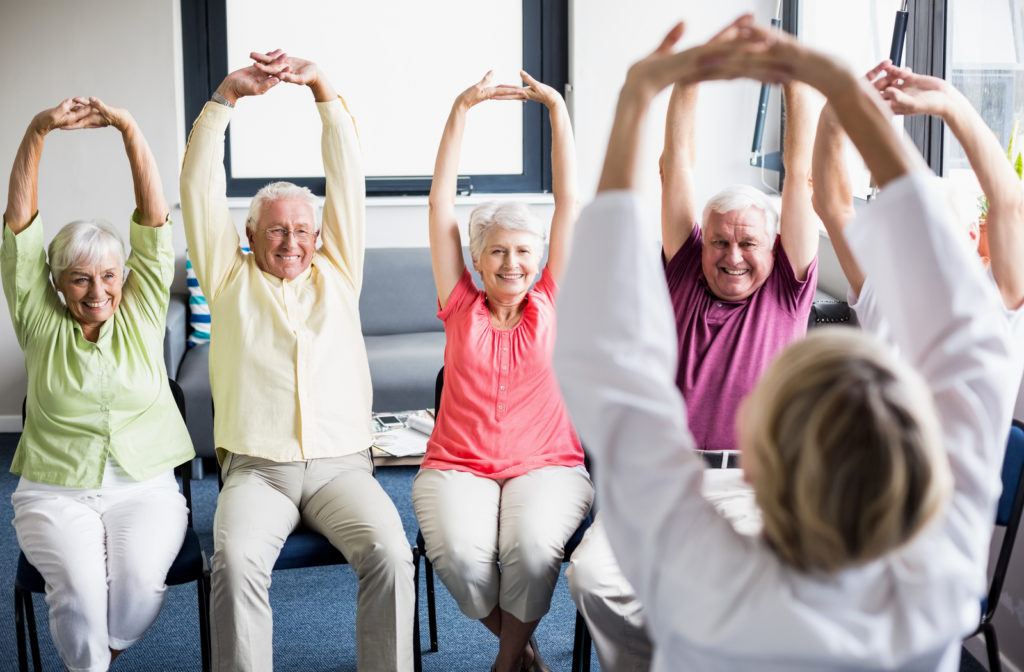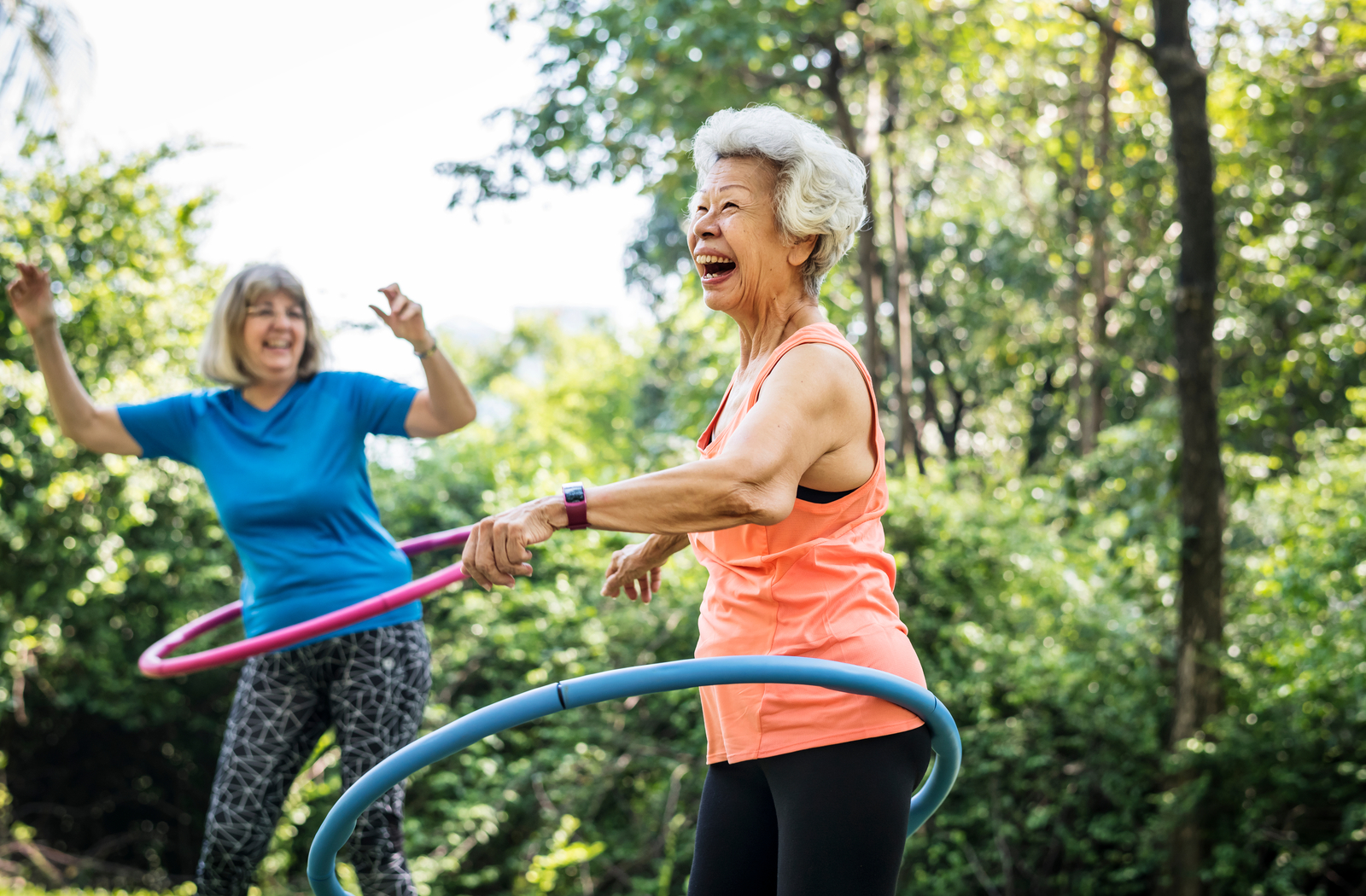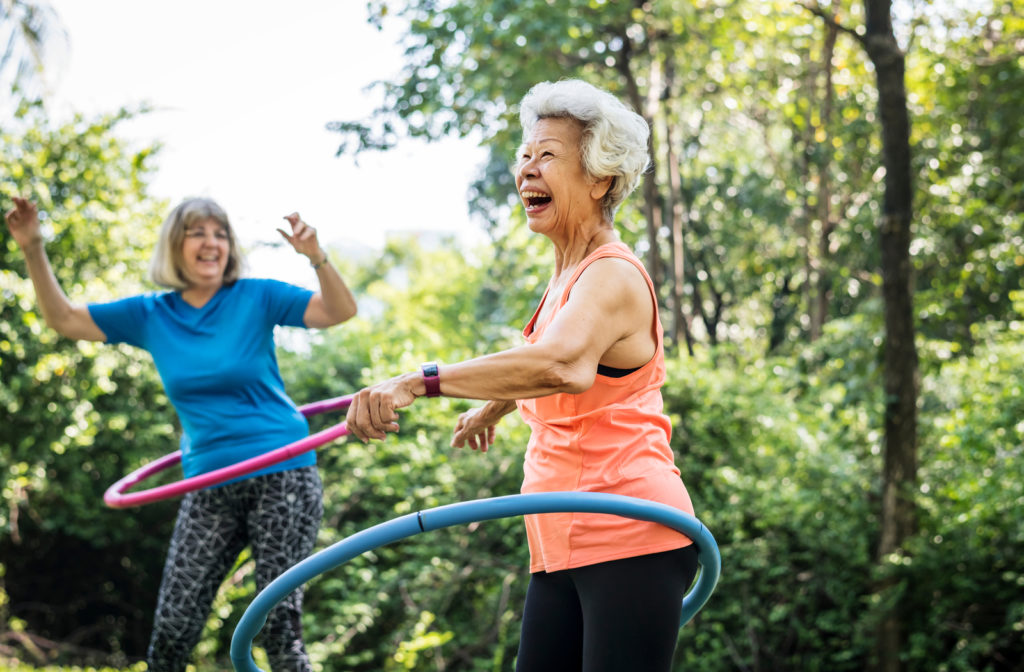Exercise is good for everyone, but how necessary is it for your lifestyle?
Physical activity has significant benefits for senior’s health, offering a way to help older adults maintain their independence and improve their well-being. How much exercise do seniors need? Continue reading to learn more about the importance of exercise and how much physical activity older adults need.
Why Should Seniors Exercise?
Physical activity is vital for older adults. Besides offering a way to enjoy yourself, exercise can help you prevent health problems and strengthen your muscles. No matter what kind of movement you’re getting, anything can help seniors stay healthy.
Older adults should aim to move more throughout the day rather than sitting. There’s nothing wrong with relaxing, but studies have found the average person over 60 spends 65 to 80% of their time awake sitting, reclining, lying down, or doing low-energy activities.
Exercise is beneficial for everyone, but it can be harder to find ways to stay active as you get older. Finding ways to move and be active can help you stay healthy.
How Can Seniors Exercise?
Seniors can stay active in various ways, and many facilities offer wellness programs to help older adults exercise. Finding the right exercises depends on your interests and the type of movement you want to do. It’s important to incorporate different activities into your daily routine.
These exercises fall into 4 main categories:
- Endurance
- Strength
- Balance
- Flexibility
Endurance
Endurance exercises can benefit your breathing and heart rate. It involves activities that get you moving while improving your energy. These exercises can improve the health of your heart, lungs, and circulatory system.
Endurance exercises include:
- Walking
- Swimming
- Biking
- Climbing stairs & hills
- Jogging
- Dancing
Strength
With age, many seniors lose muscle mass. This is a natural part of aging, but you can preserve muscle loss with exercise. Less muscle can affect your strength and mobility, increasing your risk of falls and fractures.
Adding strength exercises to your daily routine can help you preserve muscles and benefit your health. You can add the following into your routine:
- Resistance bands
- Weights
- Bodyweight exercises (push-ups, sit-ups)
Balance
Good balance is important. It can help improve your flexibility and lower your risk of falls. Some balance exercises include:
- Standing on one foot
- Walking heel-to-toe
- Tai chi
- Yoga
Flexibility
With so many older adults spending time sitting or lying down, it can lead to limited flexibility. Inflexibility can make daily activities like standing up or getting out of bed more difficult.
Everyone needs flexibility. For seniors, it can benefit their overall well-being. A 12-month study found participants of a stretch and flex program had positive changes in their physical fitness, self-efficacy, and overall well-being.
You can increase flexibility by:
- Stretching
- Doing yoga
Older adults need exercise for their health and wellness. While physical activity is beneficial, how much do seniors need?

How Much Exercise Do Seniors Need?
Older adults looking to exercise should aim for 150 to 300 minutes of exercise a week. The ideal way to hit these benchmarks is to combine muscle-strengthening exercises with aerobic activity.
If you have a medical condition or cannot exercise for long periods, focus on doing as much as possible. Remember, any exercise is beneficial for you!
Your movement can be either moderate or vigorous, depending on your needs. This exercise can be a brisk walk for 150 minutes per week, broken down into 30 minutes of walking, 5 days a week. Vigorous activity includes jogging or running for 75 minutes a week.
Regardless of your aerobic activity, strive to complete at least 2 or more days a week of muscle-strengthening exercise. Make sure to work all of your major muscle groups, including:
- Legs
- Hips
- Back
- Abdomen
- Chest
- Shoulders
- Arms
Exercise can be as simple as a 30-minute walk once a day, leaving you time to enjoy all of the other activities you do. The benefits of exercising are worth your time.
If you struggle with motivating yourself, a supportive community can help you get the physical activity you need.
The Benefits of Exercise for Seniors
Exercise is fun and a great hobby, but it also has several health benefits. You don’t need to be a professional athlete to experience them. Adding moderate-intensity activities, such as a brisk walk, into your routine can help you feel better and reduce your risk of depression and anxiety.
Physical activity can help you:
- Manage your weight
- Reduce your risk of cardiovascular disease
- Reduce your risk of diabetes
- Improve your quality of life
- Strengthen your bones & muscles
- Improve your ability to complete daily tasks
- Increase your life expectancy
People who are physically active for at least 150 minutes per week have a 33% lower mortality risk. Exercise is one of the best investments you can make for your health.
Invest in Your Long-Term Health
If you care about your health, exercise can provide immediate and long-term benefits. You don’t need to do anything strenuous right away; find the best activities for you.
If you struggle with motivating yourself, there are always communities that can help you cultivate a healthy lifestyle. Having people around for support can help you reach your fitness goals.
Contact a local senior living community if you’re interested in a place that can help you stay active.




